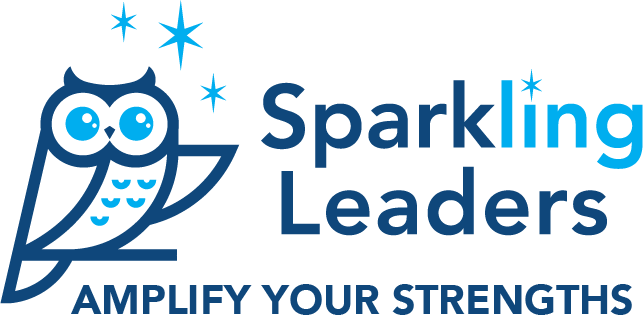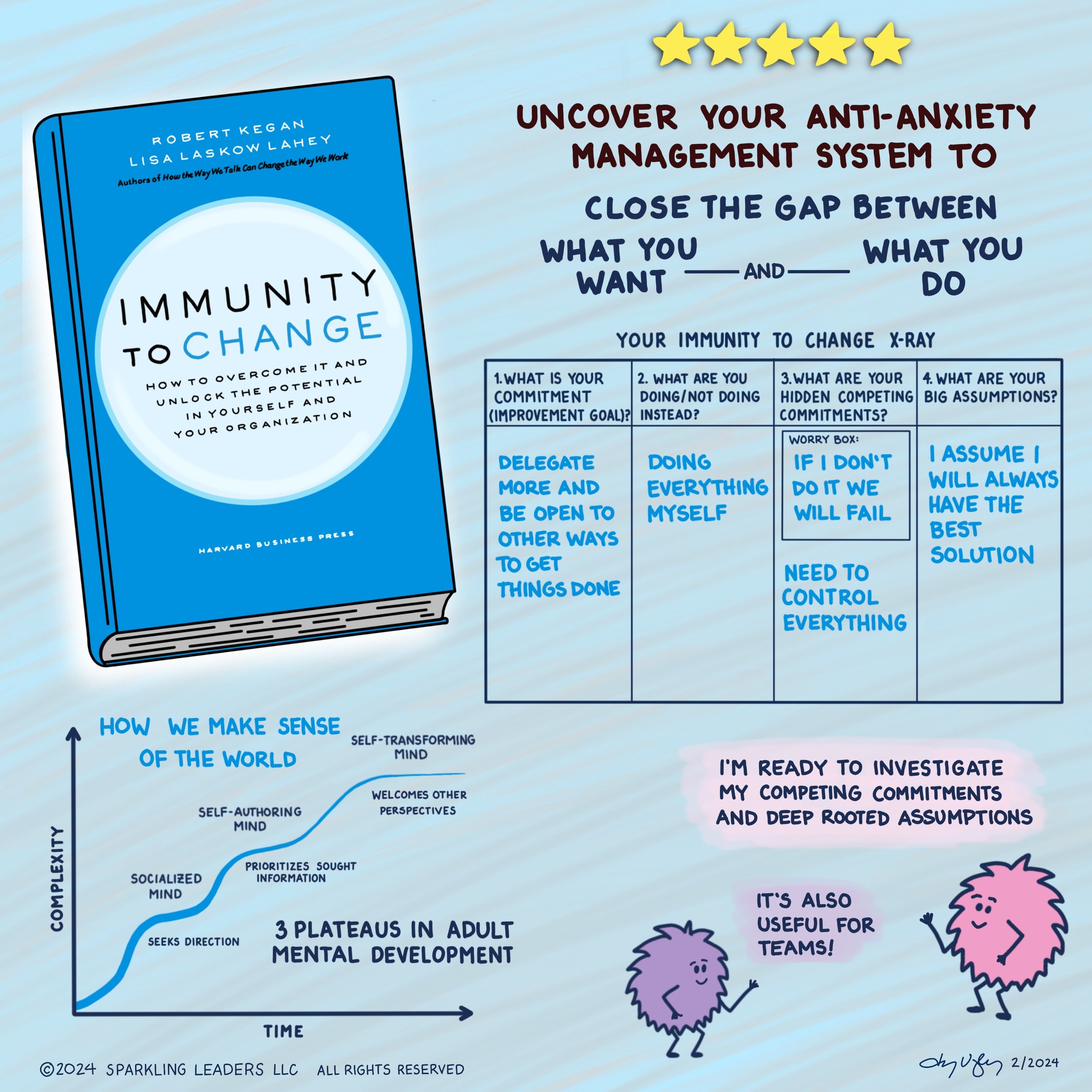Immunity to Change Concept and Book Review
If you are interested in change theories, you most likely have come across Kegan and Lahey’s Immunity to Change. The main premise is that if change were easy to make, we would do it. One of the reasons it’s so hard is that change goes against our anti-anxiety systems. Our anti-anxiety systems help us throughout the day and make our lives easier, except when we want to make a change. The goal then is to identify our competing commitments and work to change our thoughts about them.
The goal is to close the gap between What You Want and What You Do.
Kegan and Lahey’s 2009 book, Immunity to Change: How to Overcome It and Unlock the Potential in Yourself and Your Organization (Leadership for the Common Good), discusses how the Immunity to Change X-ray (or map) can help you identify what is holding you back from making change. Below is a blank copy of an Immunity to Change X-ray, click on it to download a pdf. Beneath the image are basic instructions on how to fill it in.
Immunity to Change X-ray Instructions
Begin by thinking about what you want to change. This step is incredibly important and I recommend writing down a number of things that come to mind. Examine your list and pick the one that will have the biggest impact for you.
In the example above, I chose, “Delegate more and be more and be open to other ways to get things done.” I recognize that I have listed two things and in my mind they are connected. As I worked through my X-ray, the connection became even more apparent.
In the second column, write down what you are doing instead of your commitment. For example, “I’m doing everything myself.”
In the third column, think about what your biggest concern or worry is. Give yourself enough time to reflect deeply about what is preventing you from making the change. For example, “If I don’t do it, we will fail.” Write your worry in the worry box.
Your biggest worry will lead you to your hidden competing commitment. For example, “I want to delegate but I also need to control everything.” As you can see, we went deep quickly.
The final step is to reflect on your big assumptions. In the case of our example, the big assumption is that “I will always have the best solution.”
Once we have identified our big assumptions, we can begin to challenge them. Has there ever been a time when someone else had a good solution or did something that made the original solution better? What might it look like to be open to other’s solutions? How could I set the team up for success instead of assuming failure? What small steps might I take?
The Immunity to Change X-ray also works well with teams.
The Immunity to Change X-ray is powerful and could be the entire book but… the book also includes a summary of three levels of adult development that differ in “how they make sense of the world and operate within it”. Kegan and Lahey propose three levels of development.
The Socialized Mind
The Self-Authoring Mind
The Self-Transforming Mind
The development graph shows three plateaus as we increase in complexity and time.
The Socialized Mind Adult is a team player. They seek direction from others and communicate what they think others want to hear.
The Self-Authoring Mind Adult prioritizes the information they seek to hear and communicates information to further their own agenda.
The Self-Transforming Mind Adult can hold contradictions. They communicate information to advance their agenda and hold space for modification. They often receive more information from others because they welcome it.
Studies referenced in the book show that very few people reach the Self-Transforming Mind stage. My perspective is that we can be in different stages for different areas of our lives as we try new things and gain experience.
Do you live in only one stage? What stage do you expect others to be in?
Let me know your thoughts and if you want to discuss any of this. There is a lot to dissect and think about!



